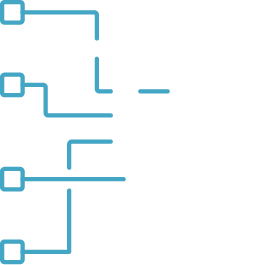Podcast
Transforming Patient Flow at Trinity Health System
Listen to Dr. Matthew Colflesh, chief medical information officer at Trinity Health System, explain TigerConnect’s pivotal role in improving patient flow.

Matthew Colflesh, MD
Chief Medical Officer, Trinity Health System

William O’Connor, MD
Chief Medical Information Officer, TigerConnect
Jan 4th, 2024 – with Dr. Matthew Colflesh, Chief Medical Officer at Trinity Health System
Dr. Matthew Colflesh, chief medical officer at Trinity Health System, the transformative impact of implementing TigerConnect for clinical communication and collaboration on patient throughput, care team coordination, and key emergency department metrics. In this HIMSSCast, Dr. Colflesh highlights the pivotal role of TigerConnect in streamlining clinical communication and enhancing workflow efficiency.
Putting the Patient First
At Trinity Health System, the patient is the focal point of the healthcare organization’s mission. Dr. Colflesh recognized the need to enhance the patient experience and identified clinical communication challenges as a primary focus. Outdated methods, such as relying on answering services, pagers, and traditional phone calls, led to complicated workflows which impacted care coordination. With the implementation of TigerConnect, Trinity initially targeted patient flow, aiming to streamline care team communication and facilitate the smooth movement of patients through the emergency room.
TigerConnect enables asynchronous communication which allows the emergency department to efficiently coordinate patient care, resulting in reduced Left Without Being Seen (LWBS) rates and improving overall patient outcomes.
“I always say that in medicine especially, communication has to be perfect. And I always liken it to the military because the military, they don’t try to be good at communication, they have to be perfect, because there’s lives on the line. And then it’s no different in medicine, lives are on the line even with minutes of communication.”
Dr. Matthew Colflesh
Tangible Impact on Patient Care and Hospital Operations
By working with TigerConnect, Trinity Health System has enhanced patient flow, reduced wait times, and increased efficiency in communication – positively impacting the quality of care. In addition to improved communication, integration with physician scheduling has optimized bed utilization, leading to enhanced hospital operations. Dr. Colflesh stresses the importance of these improvements not only for financial reasons but also for enhancing the overall quality and experience of patient care.
“If you get patient flow right, then you get your Left Without Being Seen (LWBS) right. We were in the 7% range, and we dropped that over the course of time with TigerConnect down to less than 2%. We got as low as 1.5%. What happens when you have better flow and you have less people in waiting rooms, that means more people come to your hospital, and so your systems are tested even further, and that’s a good thing, and that’s where we’re at.”
Dr. Matthew Colflesh
Related:
- Connect with Dr. Matthew Colflesh on LinkedIn
- Learn more about TigerConnect Resident Scheduling
- Follow TigerConnect on LinkedIn for episodes, announcements, and news
- Subscribe to The Connected Care Team on your favorite platform to get new episodes first






